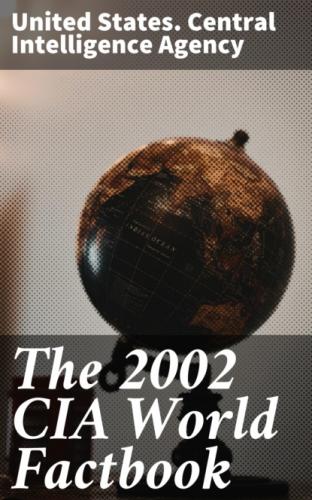GDP: purchasing power parity - $6.8 billion (2001 est.)
GDP - real growth rate: 5.4% (2001 est.)
GDP - per capita: purchasing power parity - $1,040 (2001 est.)
GDP - composition by sector: agriculture: 36% industry: 14% services: 50% (2001 est.)
Population below poverty line: 37% (2001 est.)
Household income or consumption by percentage share: lowest 10%: NA% highest 10%: NA%
Inflation rate (consumer prices): 3% (2001 est.)
Labor force: NA
Unemployment rate: NA%
Budget: revenues: $377.4 million expenditures: $561.8 million, including capital expenditures of $NA (2001)
Industries: textiles, food processing, chemical production, construction materials (2001)
Industrial production growth rate: 8.3% (2001 est.)
Electricity - production: 240 million kWh (2000)
Electricity - production by source: fossil fuel: 16.67% hydro: 83.33% other: 0% (2000) nuclear: 0%
Electricity - consumption: 523.2 million kWh (2000)
Electricity - exports: 0 kWh (2000)
Electricity - imports: 300 million kWh (2000)
Agriculture - products: cotton, corn, cassava (tapioca), yams, beans, palm oil, peanuts, livestock (2001)
Exports: $35.3 million (f.o.b., 2000)
Exports - commodities: cotton, crude oil, palm products, cocoa
Exports - partners: Brazil, France, Indonesia, Thailand, Morocco,
Portugal, Cote d'Ivoire (2001)
Imports: $437.6 million (c.i.f., 2000)
Imports - commodities: foodstuffs, capital goods, petroleum products
Imports - partners: France, US, China, Cote d'Ivoire, Netherlands,
Japan (2001)
Debt - external: $1.18 billion (2000)
Economic aid - recipient: $342.6 million (2000)
Currency: Communaute Financiere Africaine franc (XOF); note - responsible authority is the Central Bank of the West African States
Currency code: XOF
Exchange rates: Communaute Financiere Africaine francs (XOF) per US dollar - 742.79 (January 2002), 733.04 (2001), 711.98 (2000), 615.70 (1999), 589.95 (1998), 583.67 (1997); note - from 1 January 1999, the XOF is pegged to the euro at a rate of 655.957 XOF per euro
Fiscal year: calendar year
Communications Benin
Telephones - main lines in use: 51,000 (2000)
Telephones - mobile cellular: 55,500 (2000)
Telephone system: general assessment: NA domestic: fair system of open wire, microwave radio relay, and cellular connections international: satellite earth station - 1 Intelsat (Atlantic Ocean); submarine cable
Radio broadcast stations: AM 2, FM 9, shortwave 4 (2000)
Radios: 660,000 (2000)
Television broadcast stations: 1 (2001)
Televisions: 66,000 (2000)
Internet country code: .bj
Internet Service Providers (ISPs): 4 (2002)
Internet users: 50,000 (2002)
Transportation Benin
Railways: total: 578 km narrow gauge: 578 km 1.000-m gauge (2000 est.)
Highways: 1,357 km (including 10 km of expressways) unpaved: Waterways: streams navigable along small sections, important only locally
Ports and harbors: Cotonou, Porto-Novo
Merchant marine: none (2002 est.)
Airports: 5 (2001)
Airports - with paved runways: total: 1 1,524 to 2,437 m: 1 (2001)
Airports - with unpaved runways: total: 4 2,438 to 3,047 m: 1 1,524 to 2,437 m: 1 914 to 1,523 m: 2 (2001)
Military Benin
Military branches: Armed Forces (including Army, Navy, Air Force),
National Gendarmerie
Military manpower - military age: 18 years of age (2002 est.)
Military manpower - availability: males age 15-49: 1,509,760 note: both sexes are liable for military service (2002 est.) females age 15-49: 1,536,036
Military manpower - fit for military service: males age 15-49: 771,373 females age 15-49: 778,730 (2002 est.)
Military manpower - reaching military age annually: males: 71,278 females: 70,088 (2002 est.)
Military expenditures - dollar figure: $27 million (FY96)
Military expenditures - percent of GDP: 1.2% (FY96)
Transnational Issues Benin
Disputes - international: Benin and Niger have refered to the ICJ the dispute over l'Ete and 14 smaller disputed islands in the Niger River, which has never been delimited; with Nigeria, several villages are in dispute along the Okpara River and only 35 km of the 436 km boundary are demarcated; the Benin-Niger-Nigeria tripoint remains undemarcated; Benin accuses Togo of moving boundary markers and stationing troops in its territory; two villages are in dispute with Burkina Faso
Illicit drugs: transshipment point for narcotics associated with Nigerian trafficking organizations and most commonly destined for Western Europe and the US
This page was last updated on 1 January 2002
========================================================================
Belarus
Introduction
Belarus
Background: After seven decades as a constituent republic of the USSR, Belarus attained its independence in 1991. It has retained closer political and economic ties to Russia than any of the other former Soviet republics. Belarus and Russia signed a treaty on a two-state union on 8 December 1999 envisioning greater political and economic integration; Belarus has agreed on the framework for implementation of the accord.
Geography Belarus
Location: Eastern Europe, east of Poland
Geographic coordinates: 53 00 N, 28 00 E
Map references: Europe
Area: total: 207,600 sq km water: 0 sq km land: 207,600 sq km
Area - comparative: slightly smaller than Kansas
Land boundaries: total: 2,900 km border countries: Latvia 141 km,
Lithuania 502 km, Poland 407 km, Russia 959 km, Ukraine 891 km
Coastline: 0 km (landlocked)
Maritime claims: none (landlocked)
Climate: cold winters, cool and moist summers; transitional between continental and maritime
Terrain: generally flat and contains much marshland
Elevation extremes: lowest point: Nyoman River 90 m highest point:
Dzyarzhynskaya Hara 346 m
Natural resources: forests, peat deposits, small quantities of oil and natural gas, granite, dolomitic limestone, marl, chalk, sand, gravel, clay
Land use: arable land: 30% permanent crops: 1% other:
